Loading
Journal of Clinical Cardiology
ISSN: 2694-5088
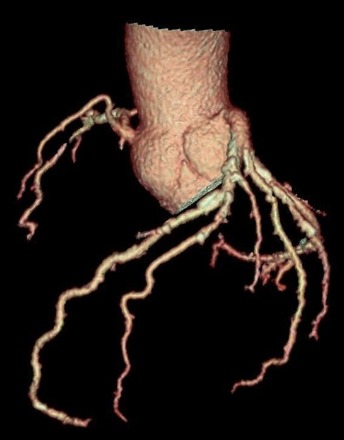
2023
Volume 4, Issue 1, p1-28
Articles published in this issue are Open Access and licensed under Creative Commons Attribution License (CC BY NC) where the readers can reuse, download, distribute the article in whole or part by mentioning proper credits to the authors.
The Fatal Interplay between Stress Induced Cardiomyopathy, Arrhythmia and Cardiogenic Shock
Mariam Khabsa, Bilal Al Kalaji, Sumaya Rasheed, Farah Zahra, Alok Patel
A 59-year-old man presents to the hospital following a syncopal episode after a low-speed car accident without visible injuries. He was diagnosed with stress cardiomyopathy and severe triple-vessel coronary artery disease. The case was complicated by complete heart block that culminated in refractory cardiogenic shock. Literature and current approach are reviewed.
J Clin Cardiol, 2023, Volume 4, Issue 1, p1-6 | DOI: 10.33696/cardiology.4.037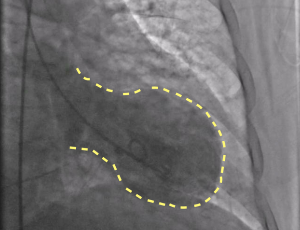
Ischemic Cardiomyopathy Evaluation with Coronary Calcium Score and CT Angiogram
Agara Kumar, Nebat Hussen, Suvasini Lakshmanan, Venkat Manubolu, April Kinninger, Matthew Budoff, Sion K. Roy
Our study aimed to examine the prevalence of atherosclerotic burden in a predominantly non-white cohort of patients from LA County who underwent coronary artery calcium scoring (CACS) and coronary CT angiogram (CCTA) for the evaluation of cardiomyopathy of ischemic origin. Ischemic cardiomyopathy, primarily caused by reduced blood supply to the heart, is the most common type of cardiomyopathy.
J Clin Cardiol, 2023, Volume 4, Issue 1, p7-13 | DOI: 10.33696/cardiology.4.038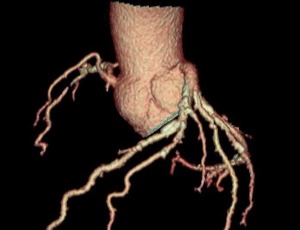
Association between Leukocyte Telomere Length and Atrial Fibrillation: A Mendelian Randomization Study
Jingmeng Liu, Jun Chen
Atrial fibrillation (AF) is the most common cardiac arrhythmia worldwide. The prevalence of AF increases significantly associated with increasing age, ranging from less than 0.5% of the population younger than 40 to 5% of those aged 65 and older and more than 10% of those surviving to the eighth decade of life. Therefore, AF is thought to be closely related to biological ageing.
J Clin Cardiol, 2023, Volume 4, Issue 1, p14-18 | DOI: 10.33696/cardiology.4.039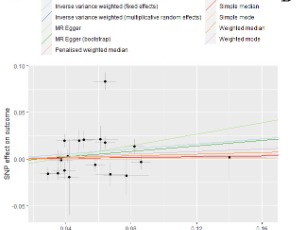
When the Right Coronary Artery is Tortuous and Too Big for Standard Coronary Stents: “The Child-in Mother Carotid Stent Technique”
Giulio Piedimonte, Enrico Cerrato, Greca Zanda, Cristina Rolfo, Francesco Tomassini, Alfonso Franzè, Marco Pavani, Rosario Tripodi, Ferdinando Varbella
Routine implementation of guide extension catheters in percutaneous coronary intervention (PCI) has significantly increased success rates in challenging anatomies, such as in tortuous and severe calcified vessels. Recently, the “Child-In-Mother technique” has been tested successfully in carotid artery stenting (CAS) in patients with severe tortuosity of the common or internal carotid artery (ICA).
J Clin Cardiol, 2023, Volume 4, Issue 1, p12-20 | DOI: 10.33696/cardiology.4.040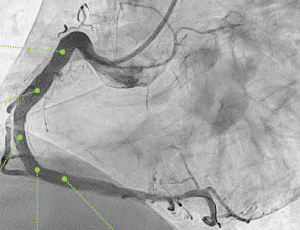
Guidelines Oriented Approach to Lipid (GOAL) Lowering Quality Improvement International Program
Anatoly Langer, Mary Tan, Caroline Spindler, Otavio Berwanger, Diane Camara, Khalid Al Faraidy, Mousa Akbar, Wael Almahmeed, Marco Alcocer-Gamba
Background: Despite practice guidelines, strategies for lowering LDL-C are often poorly adopted in clinical practice. Materials and Methods: Five countries (Brazil, Kuwait, Mexico, Saudi Arabia, and UAE) enrolled 2,422 patients with atherosclerotic cardiovascular disease (ASCVD) or familial hypercholesterolemia (FH) with low density lipoprotein cholesterol level (LDL-C) above 1.4 mmol/L. Patients were followed at 6 ± 2 months intervals to assess LDL-C level and treatment with ezetimibe and/or proprotein convertase subtilisin/kexin type 9 inhibitor (PCSK9i).
J Clin Cardiol, 2023, Volume 4, Issue 1, p23-28 | DOI: 10.33696/cardiology.4.041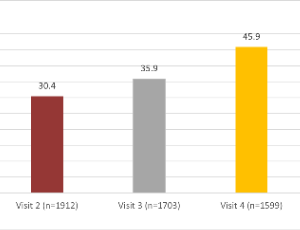
Recommended Articles
Prognosis of Patients with Advanced Liver Disease and Positive Stress Echocardiograms: Impact of Coronary Artery Disease, Non-alcoholic Steatohepatitis, and Beta-blocker Therapy
Cardiac Complications are the leading cause of mortality after orthotopic liver transplantation. Advanced liver disease patients with positive DSE are at increased risk. CAD, beta blocker use and NASH are independently associated with cardiac events.
Atrial Fibrillation, Atrial Cardiopathy and Cryptogenic Strokes
Cryptogenic stroke (CS) refers to the cerebral infarcts for which no definite cause is identified after adequate diagnostic evaluation. It accounts for 10-15% of all
strokes. Most of the cryptogenic strokes are embolicappearing non-lacunar infarcts based on the radiographic pattern.
The Fatal Interplay between Stress Induced Cardiomyopathy, Arrhythmia and Cardiogenic Shock
A 59-year-old man presents to the hospital following a syncopal episode after a low-speed car accident without visible injuries. He was diagnosed with stress cardiomyopathy and severe triple-vessel coronary artery disease. The case was complicated by complete heart block that culminated in refractory cardiogenic shock. Literature and current approach are reviewed.
Association between Leukocyte Telomere Length and Atrial Fibrillation: A Mendelian Randomization Study
Atrial fibrillation (AF) is the most common cardiac arrhythmia worldwide. The prevalence of AF increases significantly associated with increasing age, ranging from less than 0.5% of the population younger than 40 to 5% of those aged 65 and older and more than 10% of those surviving to the eighth decade of life. Therefore, AF is thought to be closely related to biological ageing.
About Scientific Archives
Scientific Archives is a global publisher initiated with the mission of ensuring equal opportunity for accessing science to research community all over the world. Spreading research findings with great relevance to all channels without any barrier is our goal. We want to overcome the challenges of Open Access with ensured quality and transparency.
